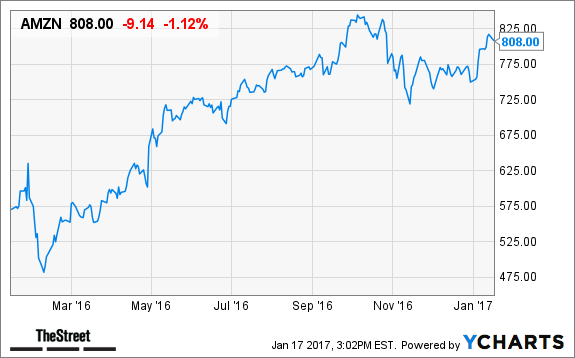Содержание

Beta signifies the change for every 1% in one variable causing the change in another variable. In the example above, the security of X Ltd. is 13.33% riskier than the security of Y Ltd. Finally, you will examine your regression output, and select the estimated slope coefficient.

R-squared is a statistical measure that represents the proportion of the variance for a dependent variable that’s explained by an independent variable. Inflation RiskInflation Risk is a situation where the purchasing power drops drastically. It could also be explained as a situation where the prices of goods and services increase more than expected. Risks Are InherentInherent Risk is the probability of a defect in the financial statement due to error, omission or misstatement identified during a financial audit. Such a risk arises because of certain factors which are beyond the internal control of the organization.
Levered BetasLevered beta measures the systematic risk of a stock that includes risk due to macroeconomic events like war, political events, recession, etc. Systematic risk is inherent to the entire market and is also known as undiversifiable risk. Note that MakeMyTrip beta is approximately closer to 1.0, this implies that MakeMyTrip stock prices have the same level of risk as to the broad NASDAQ Index. The first step is to download the stock price and Index data.
How to Calculate Beta
The user is required to simply insert the following details into the calculator for the quick result of the calculation. Therefore, the levered beta of JKL Inc. stood at 1.18x as on December 31,2 018. Then divide the covariance by the variance to get the beta. The comparison to a value of 1 is ultimately because the Market Beta (i.e., the beta of the market portfolio) is always equal to 1. Now, if this equation is freaking you out, please don’t let it freak you out. You’ll understand it inside out by the time you finish reading this article.
We will discuss some examples using data from the industry. Make sure you enter correct values in right order which is – of the stock and then of the index. In the third method we leverage Excel’s Regression calculator, which is part of the add-in Analysis ToolPak.
Treasury Bills for beta calculation excels in U.S. dollars and German Government Bills for investments that trade in euros. One of the most interesting application of beta, as a measure of risk is the calculation of the beta of a portfolio, in order to quantity its risk. The good thing is that it is quite easy to find the beta of the portfolio based upon the betas of each of the individual components of the portfolio and their weights. Typically, a levered beta value of 1 means that the stock’s risk is at par with the market risk, while a beta value of 1 means the stock is more riskier than the market risk. This tool calculates beta across any time frame for any stock against any benchmark. It uses historical stock quotes downloaded from Yahoo Finance.
Beta is a financial term widely used in fundamental analysis. It is used to gauge or measure the volatility of a particular stock as compared to the market index (Ex. S&P 500 or Nifty 50). Levered beta is the beta of a company inclusive of the effects from the capital structure. It’s calculated from historical data , and of course depends on the chosen time period. This Excel spreadsheet calculates the beta of a stock, a widely used risk management tool that describes the risk of a single stock with respect to the risk of the overall market. Covariance is an evaluation of the directional relationship between the returns of two assets.
If, on the other hand, you’re a risk-averse investor (i.e., someone who prefersnot to take risk), then a portfolio beta of say, 1, might be far too high. A ‘good’ portfolio beta really depends on what your investment goals are and what your risk preferences are. Remember, higher beta stocks tend to be riskier vis-a-vis low beta stocks. Mindle Plc has a negative beta equal to -0.04, which is very close to 0, meaning it’s the least risky of the 5 stocks . Notice that this particular set of stocks has a large variety in terms of their individual exposures to market risk. Jo’s portfolio beta is therefore approximately equal to 1.13 meaning it is slightly riskier than the market portfolio.
SLOPE Function
So, beta helps in computing and assessing the risk of a particular stock or portfolio in comparison to the market. Another problem may be the index used to calculate beta. Most provided betas use the American standard of the S&P 500 Index.
From this expanded form, it’s clear that the portfolio beta is nothing but theweighted average of the individual betas that make up the portfolio. As we demonstrate in our Investment Analysis and Portfolio Management course, one of the effects of diversification is that all the unsystematic risk is eliminated. Put simply, the portfolio beta is your primary way of identifying your exposure to the one risk you simply cannot control. Naturally, the relationship between expected returns and risk means that your overall expected return will also decrease as a result. Some may argue that the slope function is the quickest, but ultimately use what you are comfortable with.
It is the type of cost which is not dependent on the business activity. Over the past four years, I have helped more than 2500 customers to implement their own investment research strategies and monitoring systems in Excel. I don’t know what you mean by “exactly 10%” in your first sentence. In summary, if we approach the goal at a faster rate than expected then we are more likely to meet or exceed that goal. And if we fall behind the less likely we are to are to meet it.
To obtain the correct format for calculation we must convert these prices into return percentages for both the index and the stock price. To do this, just take the price from today minus the price from yesterday and divide the answer by the price of yesterday. To the market in explaining asset returns, the portion of unsystematic risks is ignored. CAPM ModelThe Capital Asset Pricing Model defines the expected return from a portfolio of various securities with varying degrees of risk. It also considers the volatility of a particular security in relation to the market.
What is Beta in Finance?
For example, variance is used in measuring the volatility of an individual stock’s price over time. Covariance is used to measure the correlation in price moves of two different stocks. A positive covariance means the stocks tend to move together when their prices go up or down. A negative covariance means the stocks move opposite of each other. Now, we have calculated beta value on a small dataset if, you have noticed in our previous example. But now, to clear your concepts well and help you understand better, we take another example of how to calculate beta.

When the beta of a stock is less than 1 it that there is less systematic risk than the market. AAPL with the beta of 1.4 would go up/do down even more than the remainder of the market. And when the market goes down, AAPL goes down even further than the market.
Behavioral Biases (Factors Affecting Financial Decision Making)
Where rs is the return on the stock and rb is the return on a benchmark index. The Structured Query Language comprises several different data types that allow it to store different types of information… Financial analysis is the process of assessing specific entities to determine their suitability for investment.
Deciding Whether to Install Solar Panels on Your Home? A New … – NIST
Deciding Whether to Install Solar Panels on Your Home? A New ….
Posted: Wed, 31 Aug 2022 07:00:00 GMT [source]
Highlight all the data in the two return columns and hit the Chart icon in Excel. Label the X-axis with the name of the index you’re using (e.g. S&P 500) and the Y-axis with the name of the stock you’re using. Determine the respective rates of return for the stock and for the market or appropriate index. Usually the rates of return are figured over several months.
A stock that swings more than the market over time has a beta greater than 1.0. If a stock moves less than the market, the stock’s beta is less than 1.0. High-beta stocks tend to be riskier but provide the potential for higher returns. Low-beta stocks pose less risk but typically yield lower returns. Beta is a measure used in fundamental analysis to determine the volatility of an asset or portfolio in relation to the overall market.
Therefore, incorporating low beta stocks versus higher beta stocks could serve as a form ofdownside protectionin times of adverse market conditions. Low beta stocks are much less volatile; however, another analysis must be done with intra-industry factors in mind. In finance, the beta of a firm refers to the sensitivity of its share price with respect to an index or benchmark. If the opposite is the case, its beta will be a value less than one.
- Step 3 – Prepare the beta coefficient excel sheet as per below.
- What you’re doing is asking Excel to replicate the same formula for each data point.
- RegressionRegression Analysis is a statistical approach for evaluating the relationship between 1 dependent variable & 1 or more independent variables.
This https://1investing.in/ calculator allows you to measure the volatility of returns of an individual stock relative to the entire market. What if there aren’t daily, weekly, or monthly changes to assess? By using only two data points , you would dramatically underestimate the true variance of those returns. The first is to use the formula for beta, which is calculated as the covariance between the return of the stock and the return of the index divided by the variance of the index . Peering through Yahoo Finance, Google Finance, or other financial data feeders, one may see a variable called betaamid other financial data, such as stock price or market value.
Method 2 – SLOPE function
If only one of the two rates is negative, the beta will be negative. You can calculate portfolio beta on Excel using the “SUMPRODUCT” function. It’s important that you understand how the portfolio beta essentially is just a weighted average of individual stock betas.
Beta is essentially the regression coefficient of a stock’s historical returns compared to those of the S&P 500 index. This coefficient represents the slope of a line of best fit correlating the stock’s returns against the index’s. Because regression coefficients are called «betas» (β) in statistics, the terminology was carried over to investing.
